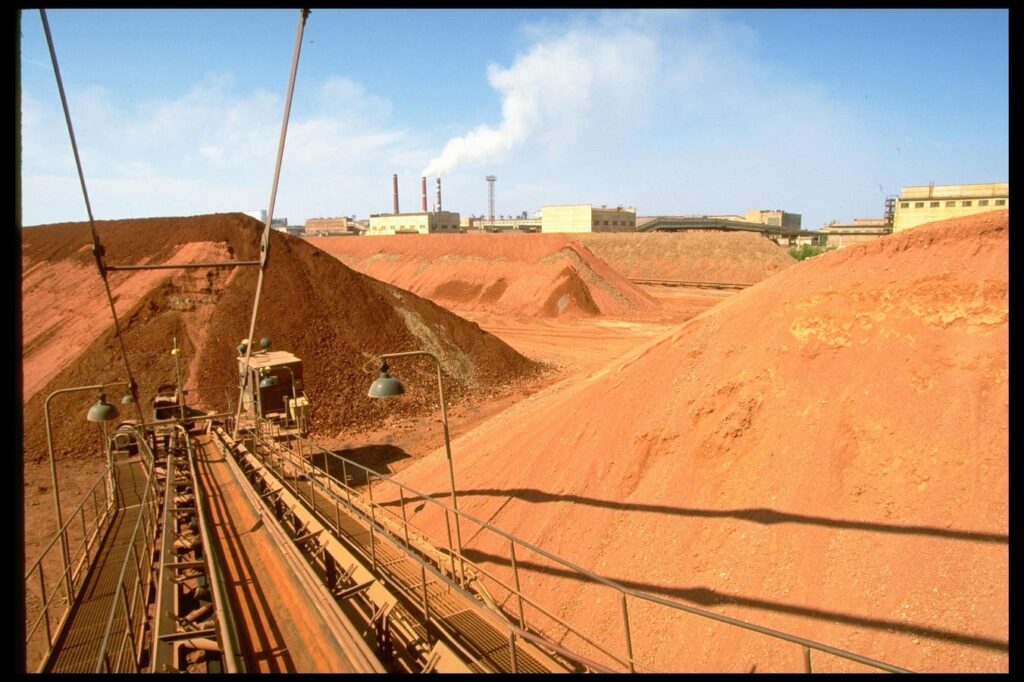The global bauxite market, critical for aluminum production, is experiencing a significant surge driven by intense demand from Chinese and U.S. companies. In Suriname, the Chinese state-owned company Chinalco has claimed previously neglected bauxite deposits, signaling an increased focus on securing bauxite resources. Meanwhile, in Australia, Alcoa, one of the largest U.S. aluminum producers, is preparing to revive bauxite mining operations in an area that has been dormant for a decade. This resurgence in mining initiatives is largely fueled by tightening supplies of bauxite and its derivative alumina, which has become increasingly essential in aluminum production.
The supply crunch has been particularly pronounced in Guinea, the world’s leading bauxite exporter, exacerbated by reduced mining efforts not only in Guinea but also in Australia, Brazil, and China. Over the last two years, prices for bauxite ore from Guinea have skyrocketed by 50%, reaching $75 per ton, while prices in Australia have surged by 60% to $55 per ton. Simultaneously, alumina prices have surged dramatically, rising by 140% over the past year due to a series of supply outages and refinery closures in Australia, indicating a market increasingly constrained by supply issues.
The tightening of the bauxite and alumina markets became evident late last year when Alcoa shuttered its Kwinana alumina refinery, a facility that had operated for 50 years. This move was soon followed by the temporary closure of Rio Tinto’s renowned alumina refinery in Gladstone, which is the largest in the world. These closures not only created an immediate supply shortage but also further escalated the prices of aluminum, prompting some producers to adjust their output. For instance, Russian aluminum giant Rusal announced a reduction of 250,000 tons from its production targets as a response to the rising costs of raw materials.
For investors, the bauxite-alumina-aluminum sector poses complex challenges, yet the upward trend in prices has positively impacted stock performance, particularly for Alcoa. The company’s shares increased by 64% over a recent two-month period, trading at $46.42. On a smaller scale, Australian firm Metro Mining has remarkably seen its share price increase by 215% over the past year, although it remains modestly valued at A$356 million. This demonstrates the varied opportunities within the sector, suggesting a growing interest from investors looking to capitalize on the burgeoning demand for bauxite.
Investment analysis from Morgan Stanley indicates that while immediate pressures in the alumina market are significant, they expect a possible easing in supply constraints during the first half of the next year. The bank highlights that alumina supply has historically lagged behind aluminum since 2022, particularly with notable losses experienced in Europe and Australia. Meanwhile, China’s traditional strategy of using excess capacity to stabilize pricing has been disrupted; Bauxite production there has decreased by eight million tons this year, leading to challenges at Chinese inland refineries, even as imports have risen.
This year’s market developments expose systemic vulnerabilities within the bauxite supply chain, and ongoing risks remain notable, especially concerning China’s reliance on bauxite sourced from Guinea. With new capacities expected to hinge significantly on this bauxite supply, any disruptions or resource scarcity could have immediate and pronounced effects on global aluminum production, further underscoring the intricate and fragile dynamics of the global bauxite market.

